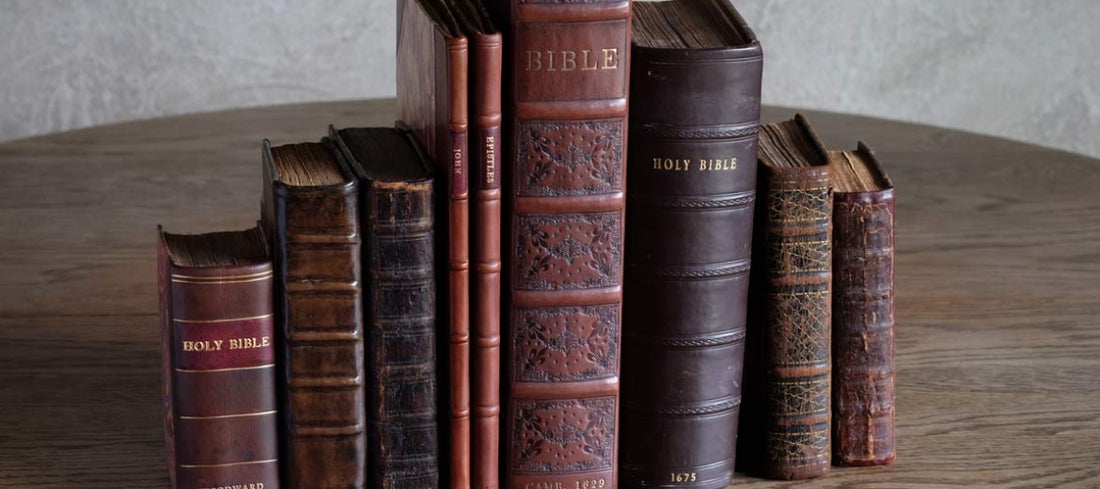In a world filled with digital texts and e-readers, vintage Bibles hold a unique place in the hearts of collectors, historians, and enthusiasts. These ancient texts are not just spiritual guides; they are also valuable artifacts that provide insight into the history of printing, religion, and culture. Whether you inherited a vintage Bible or stumbled upon one at an antique store, you may be wondering, "Is my vintage Bible valuable?" This article aims to guide you through the process of determining the worth of your vintage Bible by highlighting ten essential factors to consider.
1. Age and Edition
The age and edition of a vintage Bible are among the most critical factors in determining its value. Older Bibles, especially those dating back to the 16th and 17th centuries, tend to be more valuable than newer ones. Additionally, the edition of the Bible can significantly affect its worth. First editions or early printings of famous translations, such as the King James Version, are highly sought after by collectors.
2. Printing and Publisher
Examine the printing details and publisher information within your vintage Bible. Look for the name of the printer and the location and year of publication. Some printers and publishers are renowned for their craftsmanship, and Bibles produced by them can fetch higher prices in the market. For example, Bibles printed by historic publishers like John Baskett or Robert Barker often command higher values due to their historical significance.
3. Binding and Cover
The condition of the binding and cover of your vintage Bible can significantly impact its value. Bibles with ornate or decorative bindings are generally more desirable to collectors. Evaluate the material used for the binding, whether it's leather, vellum, or another material, and check for any signs of damage or wear. A well-preserved binding and cover can substantially enhance the Bible's value.
4. Illustrations and Engravings
Many vintage Bibles feature intricate illustrations and engravings that add both aesthetic appeal and historical value. Examine your Bible for any illustrations or engravings and research their significance. Bibles with beautifully executed artwork or historical illustrations may be more valuable to collectors interested in the visual aspects of these texts.
5. Rarity
Rarity is a crucial factor in determining the value of a vintage Bible. If your Bible is one of a limited number of surviving copies or has unique features, such as annotations by a notable historical figure, it can command a higher price. Rare variations of famous translations or editions can be particularly sought after by collectors.
6. Historical Significance
Consider the historical significance of your vintage Bible. Was it owned by a famous historical figure or associated with a significant event in history? Bibles with proven historical provenance can be highly valuable due to their connection to important figures or events.
7. Condition
The condition of your vintage Bible plays a vital role in determining its value. Collectors often seek Bibles that are in excellent condition with minimal wear, tears, or damage. Factors such as the presence of foxing (brown spots caused by oxidation), water damage, or missing pages can significantly affect a Bible's worth.
8. Annotations and Inscriptions
Examine your vintage Bible for any handwritten annotations, inscriptions, or marginal notes. These markings can provide valuable historical context or indicate previous ownership by noteworthy individuals. A Bible with annotations by a famous theologian or historical figure can be exceptionally valuable.
9. Popularity of Translation
The popularity of the Bible's translation can impact its value. The King James Version (KJV) is one of the most widely recognized and collected translations, making vintage KJV Bibles particularly sought after. However, other translations, such as the Geneva Bible or the Douay-Rheims Bible, can also hold significant value, especially if they are early editions.
10. Market Demand
Lastly, consider the current market demand for vintage Bibles. The value of these books can fluctuate over time based on collector trends and market demand. To get an accurate estimate of your Bible's worth, research recent sales of similar Bibles at auctions, antique stores, or online marketplaces.
Owning a vintage Bible is not only a spiritual connection to the past but also a potential treasure waiting to be discovered. By carefully assessing the age, edition, condition, and historical significance of your vintage Bible, you can gain a better understanding of its value. Whether you're a collector, historian, or someone who stumbled upon a family heirloom, knowing the worth of your vintage Bible can be a rewarding journey into the world of antiquarian books. So, take the time to investigate these ten essential factors and unlock the treasure within your vintage Bible.


